Trip Report: Papua New Guinea
Visited in May 2023
In today’s world, there are only a few corners left that the white man has not already completely explored. Globalization and digitalization have made it possible to connect even the most remote areas with the rest of the world.
One exception is the country of Papua New Guinea. The country is located north of Australia on the island of New Guinea, the western half of which belongs to Indonesia. Papua New Guinea is part of the continent of Oceania and the cultural region of Melanesia, which also includes Vanuatu and the Solomon Islands, for example.
Papua New Guinea, often simply called PNG, is sometimes referred to as the “least civilized country in the world”. Various tribes live in the country, some of them on black spots on the map, far from the modern world. With about 840 languages spoken in the country, Papua New Guinea is the most linguistically diverse country in the world.
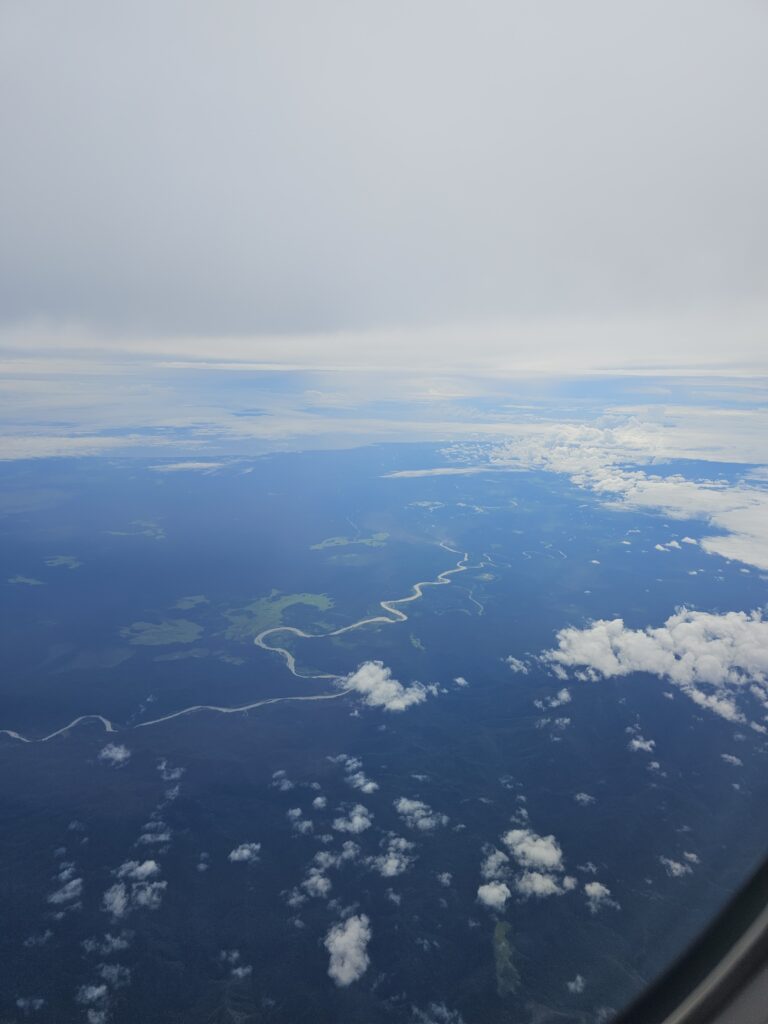
Besides, PNG is the last country in the world where cannibalism supposedly still exists. The first time I read anything about this country was when a British couple was attacked by a cannibal tribe while they were on a hike a few years ago. Not only because of this, but for other reasons as well, Papua New Guinea doesn’t exactly have a reputation for being a safe country. The capital, Port Moresby, ranks as one of the most dangerous cities in the world, where gang violence and gun battles are not uncommon.
In fact, PNG seems to be the only country in the entire region from India to New Zealand that has the distinction of being dangerous. When I visited Tuvalu in 2020, I met a Cypriot who lived in Papua New Guinea at that time. When I asked him how life is in PNG, he opened his wallet and pulled out his gun license. That is completely normal there, he said.
The remoteness of various places in Papua New Guinea also has an advantage: untouched nature and a very high biodiversity (7% of the world with in <1% of the earth’s land mass). This makes the country a very attractive destination for those who want to spend their time in the wild nature and visit tribes. In fact, the tribes are nowadays one of the main reasons why tourists visit this country.
In contrast, my visit to Papua New Guinea was definitely less adventurous. During a trip to the Philippines and Oceania I spent four nights in the capital Port Moresby (pronounced: Morsbee). I wanted to get a first impression of this country with the option to come back sometime. There is also the possibility of a new country emerging within Papua New Guinea. The autonomous region of Bougainville, the country’s easternmost island, voted for independence in a referendum a few years ago. That would be a good reason to revisit PNG and also check out that new country.
That I would spend four nights and three days in Port Moresby was also somewhat because of the flight schedule. The country I visited before, Palau, has only one flight a week to PNG. In addition, there are three or four flights to Solomon Islands, the country I visited next. When I booked PNG, I left the option open to travel by domestic flight anywhere else in the country. However, I quickly realized that return flights from the capital to other parts of the country are relatively expensive (~500 USD). And so in the end I decided to spend all my time in Port Moresby and do day trips.
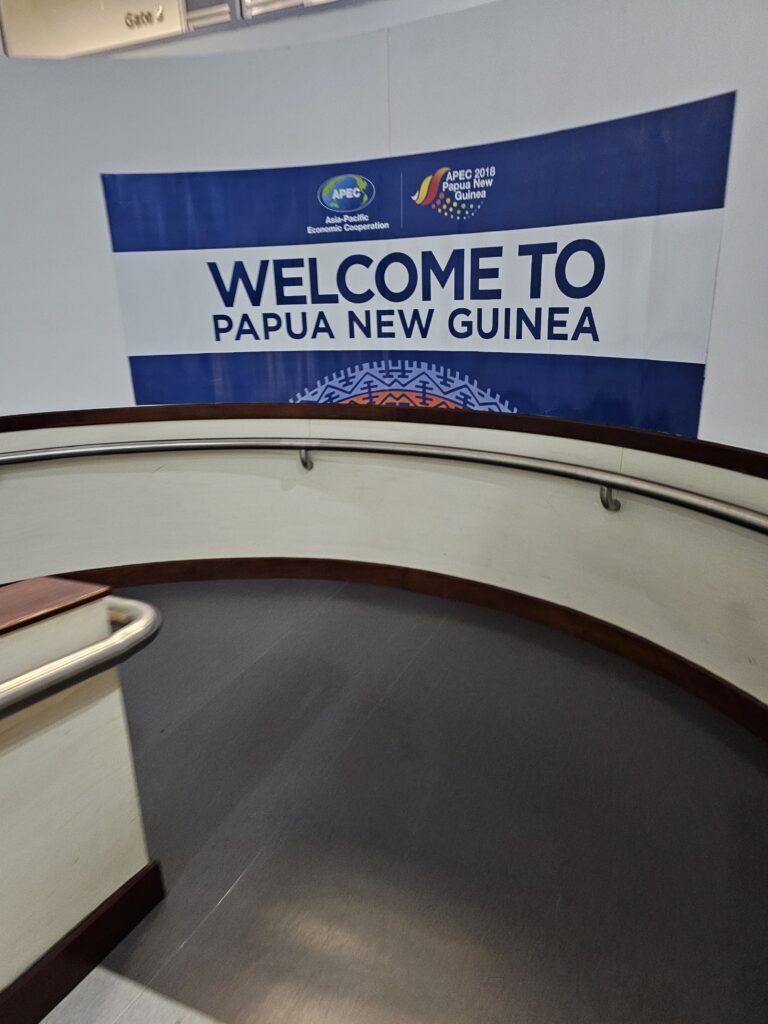
My flight from Palau landed at an ungodly hour, at 4:15am. There were just ten passengers on the flight from Koror/Palau, which was continuing to Brisbane after Port Moresby. Only three of the passengers entered Papua New Guinea. Besides me, they were the two Indians I met in Palau. The other passagers were in transit only. Immigration therefore went pretty fast. I showed my evisa (it cost 50 USD and is required for all arriving passengers since PNG has suspended the visa on arrival), got the passport stamp, left the airport and took the shuttle to the Hilton.
Hotels in Port Moresby are unfortunately expensive and clearly geared towards business travelers. Even in retrospect, I have the feeling that not a single guest at the Hilton was a tourist – except me. The two Indians, by the way, booked the Hideaway Hotel because it was the cheapest. It had a 6.8 rating and the shower had no running water.
First impressions of Port Moresby
Because of my late arrival I slept the whole morning and woke up around noon. I had already expected that this day was more or less lost. No problem because in Port Moresby there are few attractions and also only one option for a day trip. Thus 2.5 days were almost one day too much.
Still, I wanted to do something on this first day and decided to go to the Vision City Mega Mall since it was within walking distance. When I told the hotel about this idea, they strongly discouraged me from walking there, even though Google Maps showed only 20 minutes walking. According to the receptionist, it is too dangerous for foreigners to walk through Port Moresby – even in daylight.
I’ve gotten used to the fact that you shouldn’t walk at night in many cities around the world. But cities where you shouldn’t be outside even during the day are a rarity. In fact, only Lagos in Nigeria or Port-au-Prince in Haiti come to mind, where at least you shouldn’t be out and about without a local companion. Or of course cities like Mogadishu, where you need a military escort. However, in the weeks and months before my visit, various travelers with whom I am in contact were in Port Moresby. All of them, or at least the male travelers, explored the city on foot alone and had no issues. I decided to do the same.
I left all my bank cards, all cash except 200 kina, which is about 55 USD, and my cell phone at the hotel. Instead, I took my spare cell phone, which I have always carried since my main phone once succumbed to the heat of Djibouti and once failed to work properly for days when it came into contact with a tiny splash of salt water in Kenya. And so I set off into the unknown and started walking. Along the way, I took dozens of photos and videos. After all, I wanted to record my experience and take pictures of the city at the same time.
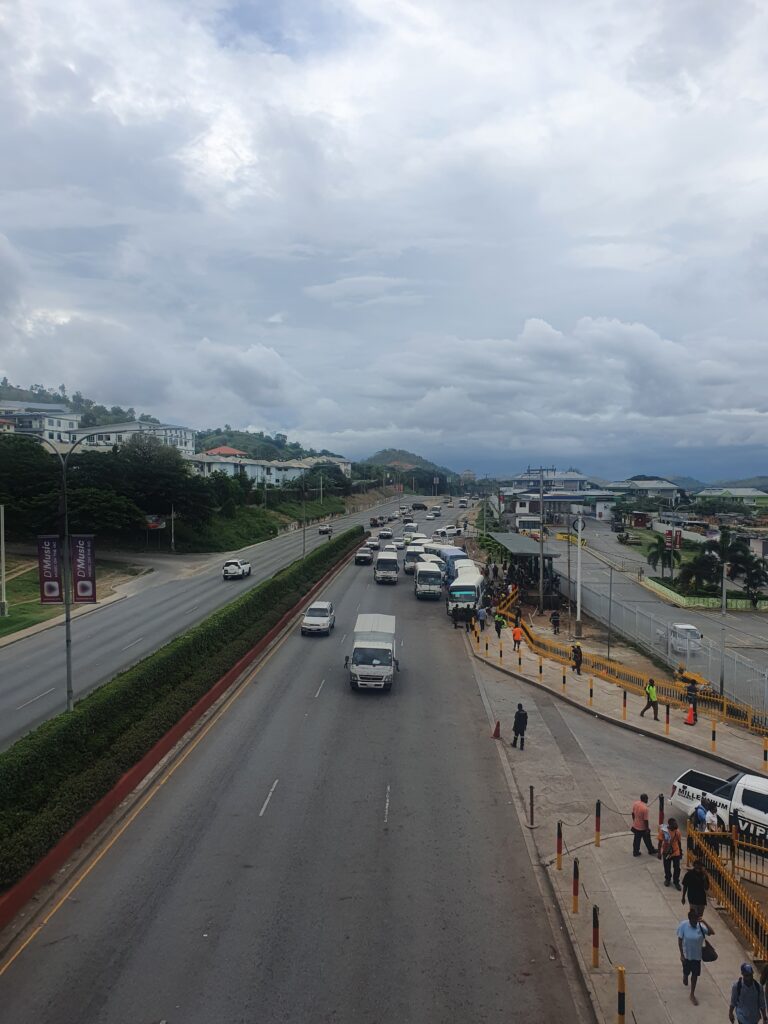
Port Moresby turned out to be quite ugly. The architecture gives relatively little and the city as a whole looks dreary and depressive. The gray sky has certainly contributed its part to this dull picture. However, I don’t think the city is pretty even when the sun is shining and the sky is blue (in fact, the sky was gray for all three days).
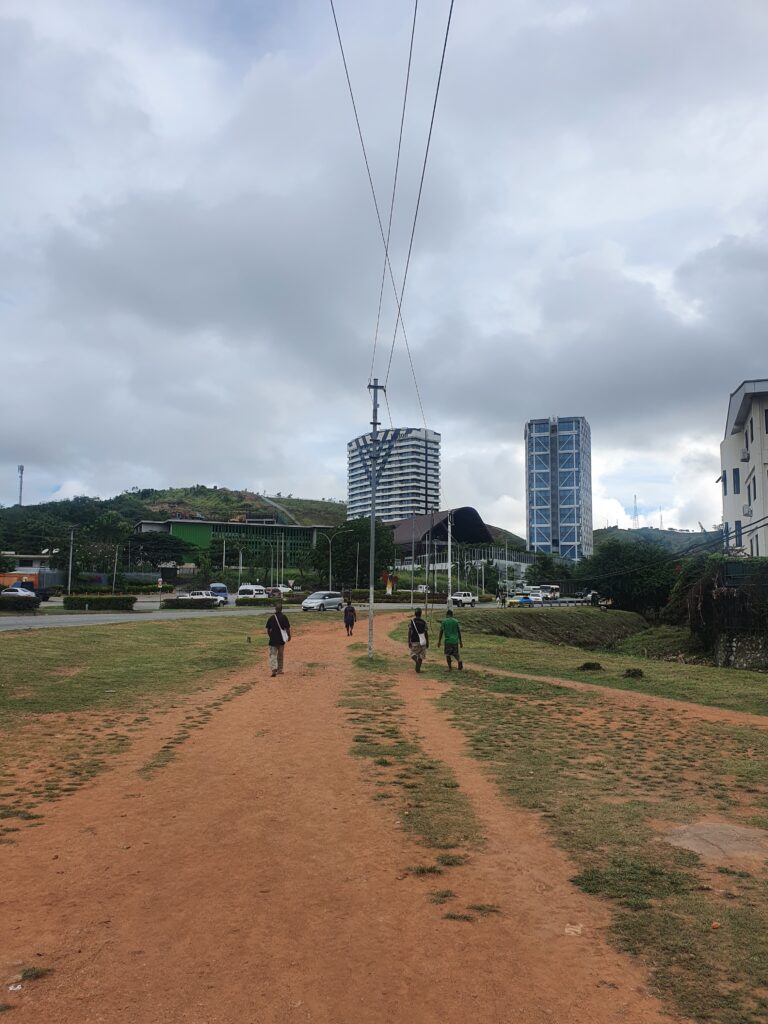
What you also often see in Port Moresby are red spots on the street. This comes from betel nuts, which the locals chew and spit out. These nuts have a stimulating and narcotic effect and are very popular in this part of the world. In fact, betel nuts are part of everyday life for many Papuans.
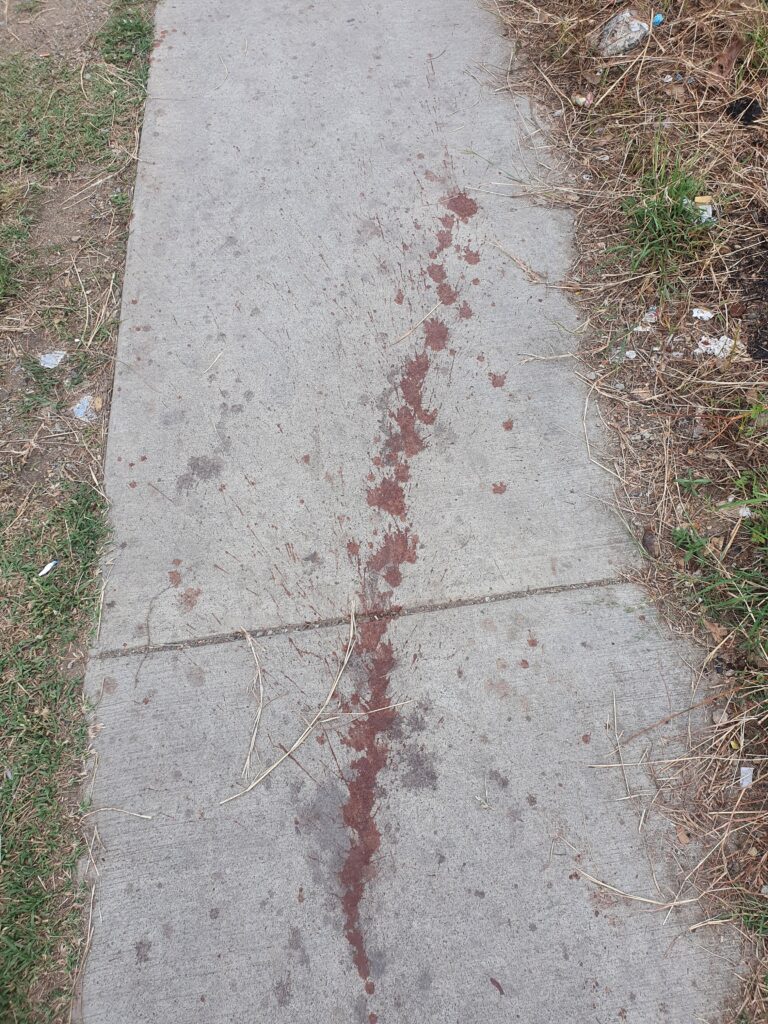
So, how was this apparently dangerous city? Did I feel unsafe? No, quite the opposite. I saw many locals and most of them greeted me in a friendly way. They were probably surprised too. I assume it does not happen every day that some gringo strolls through the streets of Port Moresby.
The mall itself was not worth mentioning. There were not many nice stores and it was neither a beautiful mall. However, it was still an interesting place to observe the life of the locals and since I did not have anything to do on that afternoon, I would not call it a waste of time either. Subsequently, I walked the same way back again, again without any incident.
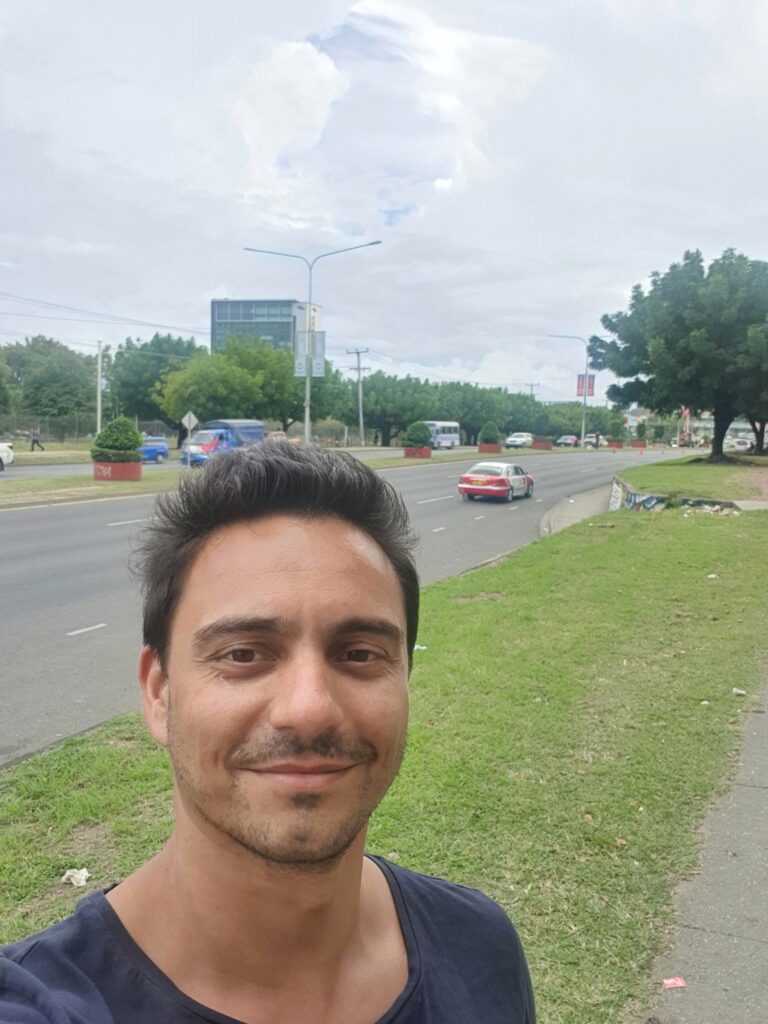
Port Moresby may be a bit dodgy, but much of it is also exaggerated. In fact, all hotels advise their guests not to walk through the city. The hotel of the two Indians also told them so. The boys were then a little more impressed by this recommendation and did not leave the hotel even once the whole first day. Sadly, the Indian food they ordered from a delivery service didn’t make it to their hotel either, even though they made the payment.
Port Moresby city tour
However, I wanted to make a better use of the other two days after that lame first day. It was especially important for me to get out of this dreadful city in one day. The Varirata National Park seemed to be the best – and probably the only – option. I wanted to do that on my last day in Papua New Guinea.
Unfortunately, the search for a guide or even a driver turned out to be a big challenge. Some tour operators charged crazy prices like 300 kina per hour. That is 85 USD. For a five to six hour tour you can calculate yourself what that would have cost. Other “unofficial” drivers that were recommended to me didn’t reply to my messages. Or they went online only once a day, which made communicating quite difficult.
I always find it fascinating when in developing countries with hardly any tourists the tour operators ruin their own business by charging prices that are higher than in Switzerland. Instead of offering a day tour for $150-200, which they can then probably do 5-6 times a month due to non-existent competition and thus receive an above-average income, they charge $500 for their service. How often will a tourist accept this offer? 1-2 times a year? If at all?
The Hilton eventually arranged a guide for me who offered city tours for 300 kina and tours outside the city for a flat fee of 400 kina. Very fair prices if you ask me. Since the Indians also wanted to do the city tour, it cost only 100 kina per person. Had the Indians not joined in, I probably would have just taken separate cabs from one place to another.
Our guide had a car with tinted windows. He confirmed that it was not advisable for foreigners to walk in Port Moresby. “The problem of our country is that the government only cares about Port Moresby and not at all about the other regions. For example, only here the roads are maintained. As a result, most of the people from PNG move to Port Moresby. Here there are too many people and not enough jobs. As a result, people cannot earn any money and are therefore forced to become criminals and rob other people in order to survive.”
Our tour consisted of four places we wanted to see: the National Museum of Papua New Guinea, the Parliament Building, Port Moresby Nature Park and Ela Beach in Downtown. Of all the places we visited, I thought the Nature Park was the best. It’s more or less a zoo, but it’s a good one, and I got to see some animals that live in PNG that I didn’t even know existed. It is a nice and interesting place to spend two or three hours. The entrance fee is 20 kina for foreigners.
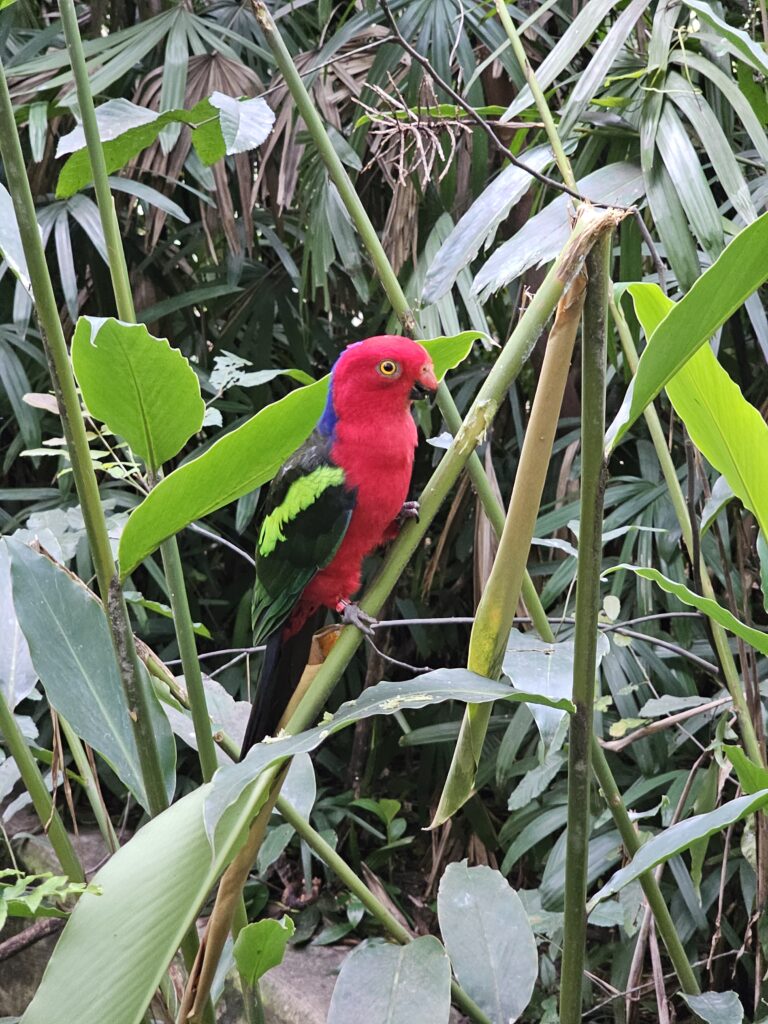
On the negative side, our guide was acting like a little kid in the park, touching some animals, spitting in cages or otherwise disturbing animals with his infantile noises. I was in a bit of a dilemma. Had he not been my only option for Varirata NP the next day, I probably would have requested a different guide for this tour.
I found the museum to be a nice place as well, although I’m not really a big fan of museums. But when a city doesn’t offer many sights, you just have to take what’s there. Anyway, the museum is in a beautiful building and inside the rooms with the exhibited objects also look pretty.
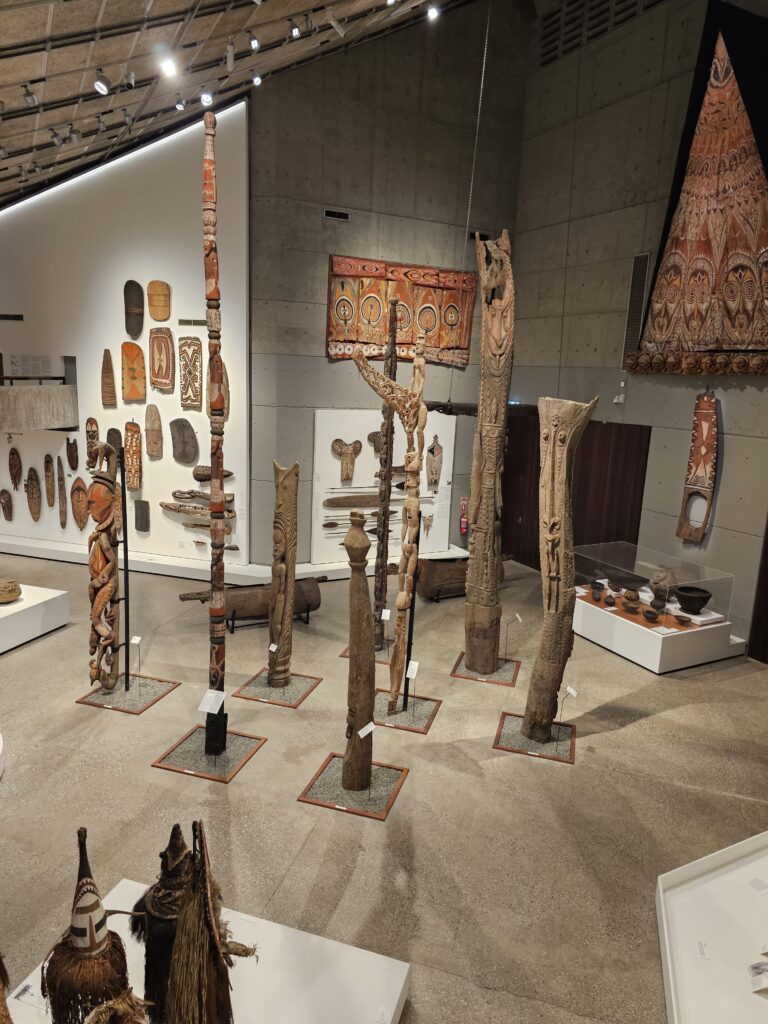
Ela Beach was our last stop. There is a Port Moresby sign and the APEC building. Apart from that, there was not much to do. Port Moresby is certainly not a city for which you need several days. Basically, you can see all the sights in about five to six hours or maybe even less. Otherwise, my recommendation is to either skip this city completely or not spend more than one day there.
Day-trip to Varirata
Therefore, it was all the more important to see something of Papua New Guinea outside of Port Moresby. On my last day, I went with the same guide to Varirata National Park, which is about an hour from Port Moresby. The Indians should have come too, but then didn’t manage to get up early, so I ended up going alone.
Before we left, we stopped at a gas station to buy some snacks. Since we were leaving at 9am and would probably not be back in Port Moresby until 3pm, we needed something for lunch. My guide pressed some money into my hand and told me to bring him something to eat as well. Counting the money at the gas station, I came up with a little over 4 kina. So about one dollar. That wasn’t even enough for a drink. He probably thought I would not notice how much the money he gave me was. Finally, I paid him for his stuff, even though he already scrounged the Nature Park entrance fee the day before.
After driving for about 20 minutes towards the national park we stopped at the Bomana War Cemetery. Papua New Guinea was also a battleground in the Second World War. At that time the country still belonged to Australia. On the Bomana War Cemetery are the graves of about 4,000 soldiers from several countries, most of them Australians, Japanese and Papuans.
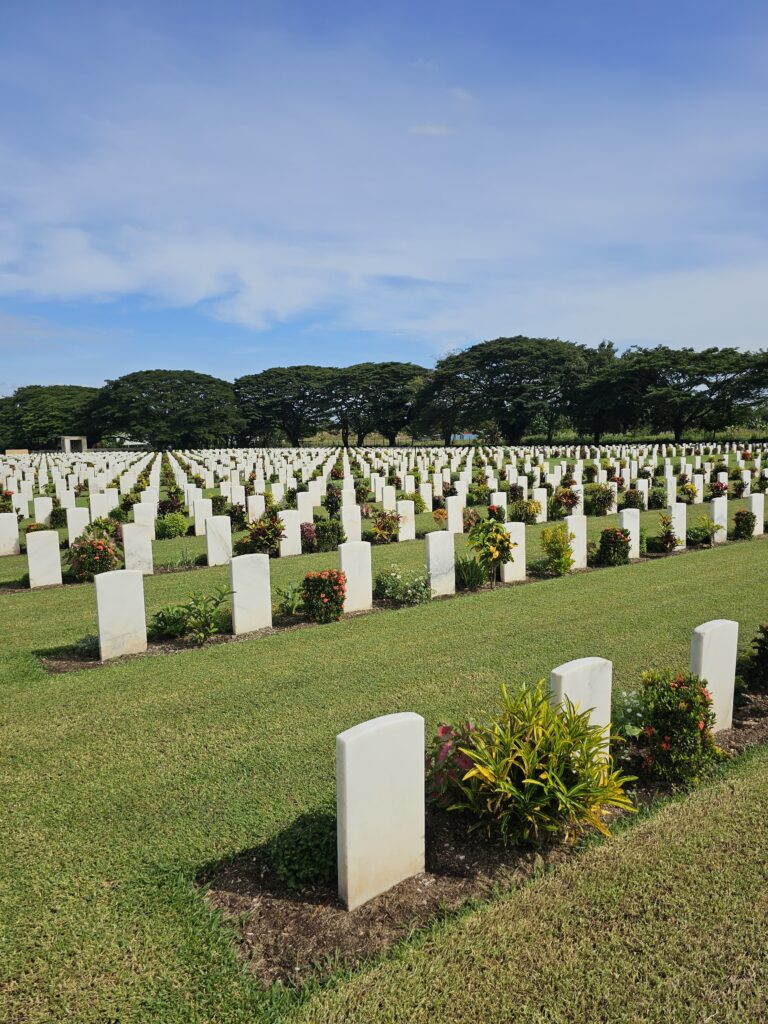
Many graves are also marked as “a soldier of the 1939-1945 war” when the identity of the soldier is unknown. There is also a single female soldier buried in this cemetery. I have seen such war cemeteries only in Hollywood movies. So it was interesting to visit a place like this in real life. The cemetery is open every day of the year and of course there is no entrance fee. I would say you need about 15-30 minutes to see this place.
Shortly before we arrived at Varirata National Park, we stopped at a viewpoint where you can see the Rouna Waterfall. A man who looked like a homeless was waiting there and told us that he “takes care” of this viewpoint. This means that you have to give him a little money to enter the place.
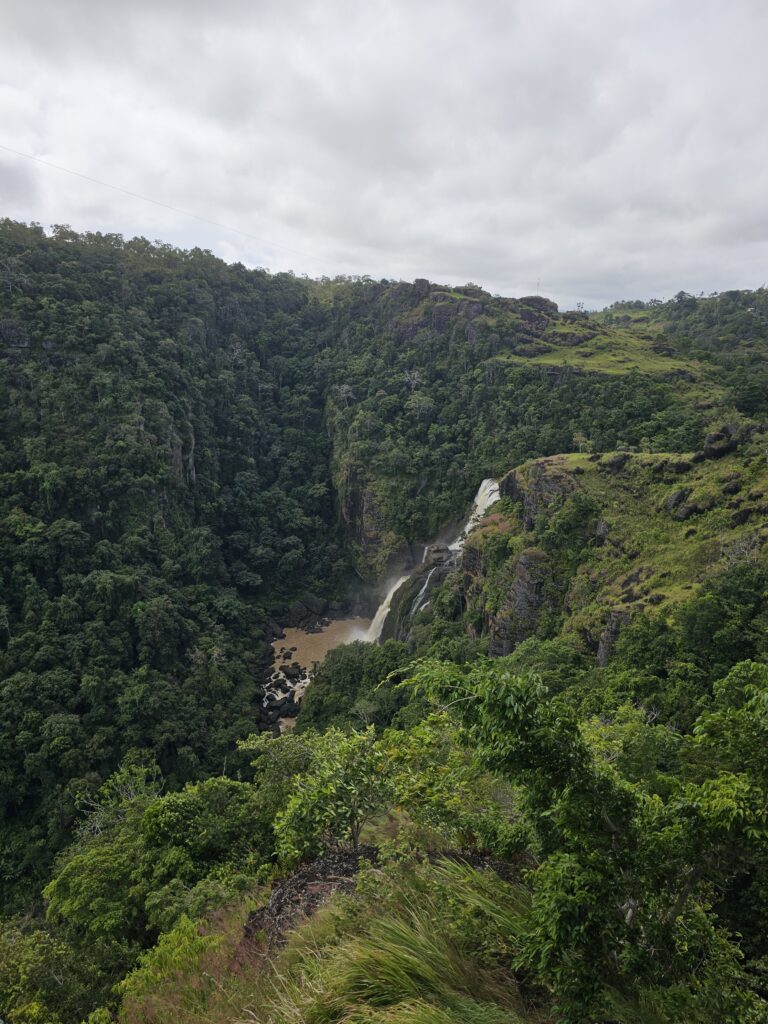
We also visited the start of the Kokoda Trail, which is about a 15-minute drive away from Varirata’s entrance. This place was a battlefield between Japanese and Australians in the Second World War and therefore has a historical importance. Today it is a popular multi-day hiking trail for tourists.
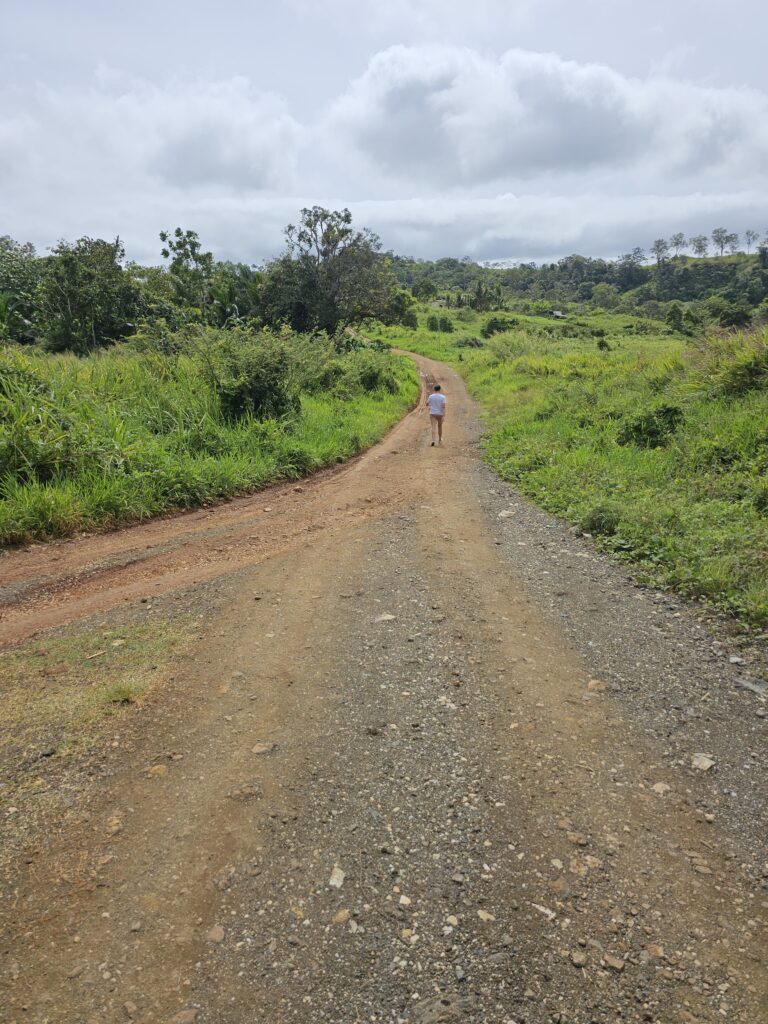
In the meantime, my guide was quite eager to take as many selfies as possible. Already at the Rouna waterfall I had to take several photos of us with my cell phone. Also at the Kokoda Trail he wanted to take one or the other selfie with me. Moreover, he insisted that I send him the pictures as soon as possible when I got back to the hotel and had internet reception.
At the same time, I noticed that his desire for this day trip was slowly running out. He was getting lazy and preferred to go back to Port Moresby. So he tried to tell me some story about a bridge at the park entrance being flooded because it had rained the night before and we had to turn back because of that. “Drive as far as you can and we’ll see,” I told him.
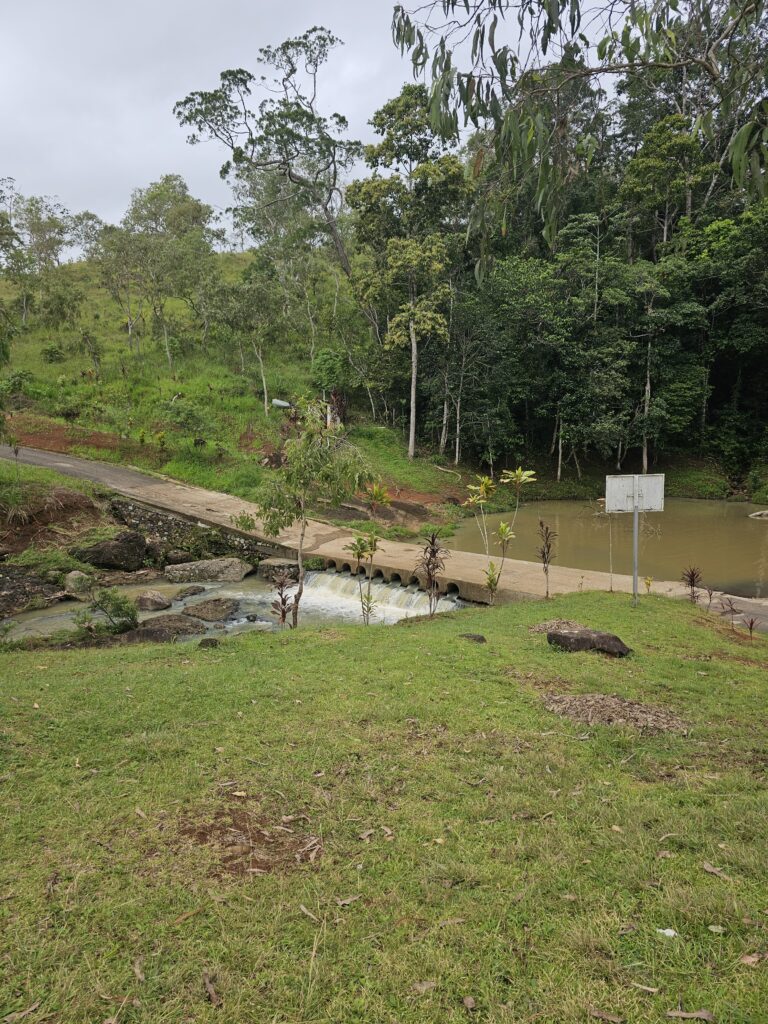
To everyone’s surprise and his inconvenience, of course, the bridge looked fine. Not a little bit did it look like we could not pass the bridge. I probably thought I was gullible and would not question his trick. I wouldn’t be surprised if several of his customers had already fallen for it.
A few minutes later, however, the tide turned and it seemed that the guide would enjoy an early finish to the tour after all. This time, to his convenience we found ourselves in front of the closed gate of the Varirata National Park.
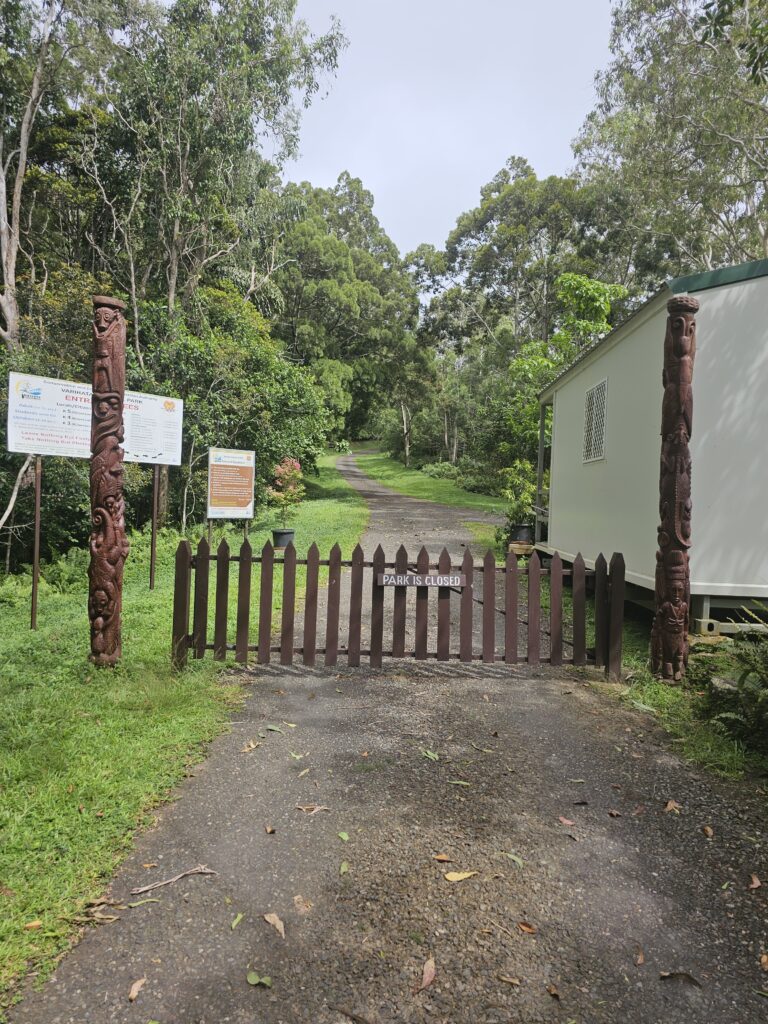
I was angry. You drive all the way out of the capital, and then the gates of the national park are locked. My guide didn’t really seem to be affected by this. He didn’t seem to care at all. Or rather, he was probably glad after his cheap attempt at the flooded bridge didn’t work out. Instead, he wanted to take a selfie in front of a meaningless “Rules and Regulations” sign.
Afterwards he wanted us to leave, but I was not happy with that. I asked if there was any possibility to go into the park. I think he realized now that I was not satisfied at all. “Ah yes, I saw one of the park rangers when we drove here. We can ask him if he opens the gate for us” Aha. So without my intervention, he wouldn’t have had the idea that we could make it by asking the ranger!
Maybe 10 minutes later, the ranger opened the gate for us and we entered the park. There are several hiking trails in Varirata National Park that lead to beautiful viewpoints. The duration of the trails range from one to three hours. Knowing how unmotivated my guide was, I wanted to show mercy before justice. That’s why I decided on a trail that would take 30 minutes to a viewpoint and 30 minutes to return.
“30 minutes of walking???” the guide said in disbelief. He would have preferred to take the car, but finally I convinced him that it would be good for his health if we would walk a bit. In the end, it was not a hike but a stroll through a forest, where we saw one or the other bird (unfortunately no endemic birds of paradise) and two deer.
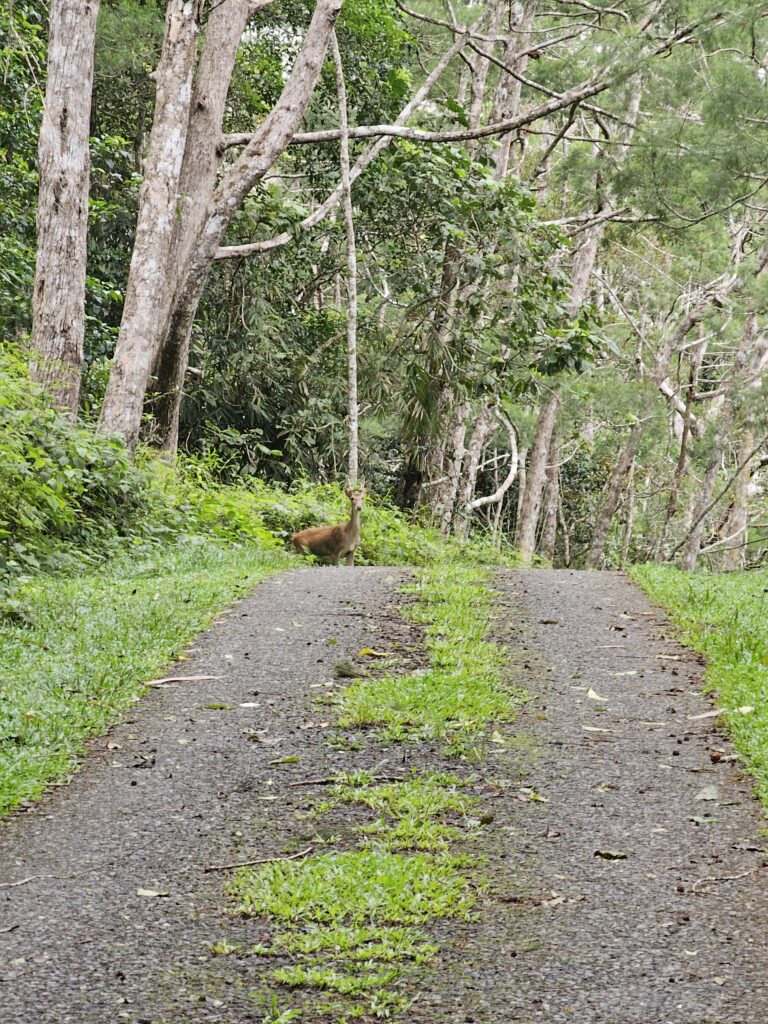
After 30 or maybe even 45 minutes, we arrived at the viewpoint, which offered a nice view over the area. We took some more photos there, of course several selfies together, before we returned and drove back to Port Moresby.
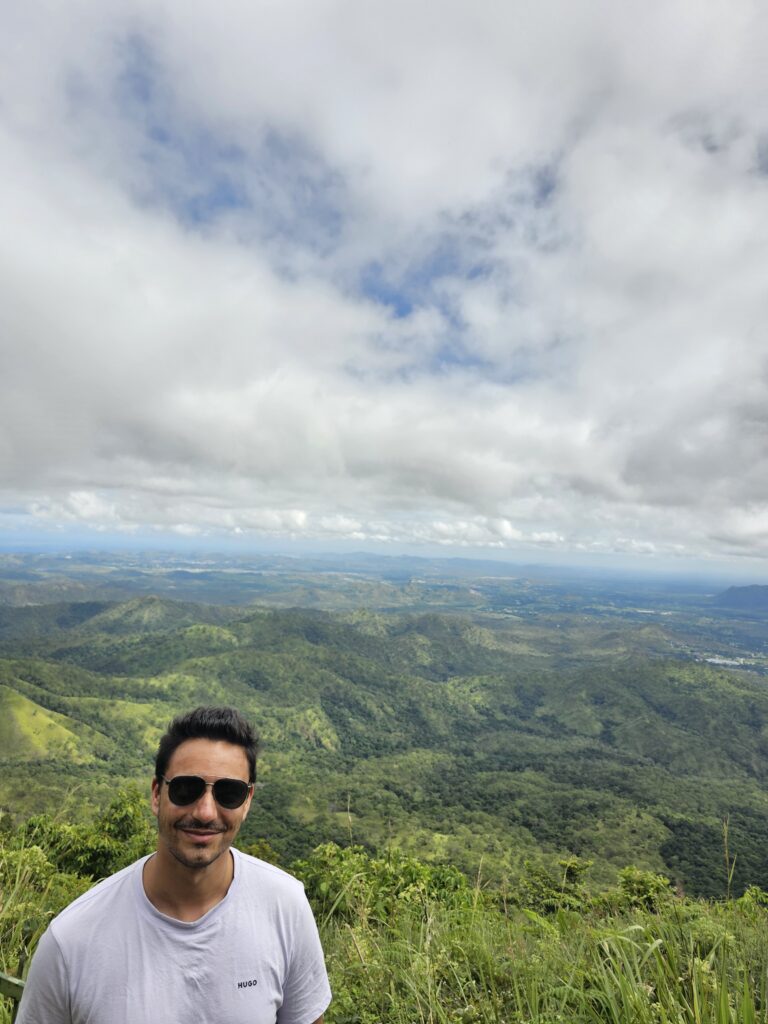
Although we didn’t talk much on the trip, my guide said at some point that he was 30 years old. I would have estimated him to be in his mid-40’s. When he said that he was born in 1990, it did not fit with his age in 2023 either. He also said that he had three children, while his oldest son was already 16. A very interesting constellation, should the age information be true.
Is the Varirata National Park worth the trip? It depends. If you are in Port Moresby, then yes, definitely. This national park is certainly the more pleasant place than the capital. But it is not worth to come to Papua New Guinea because of the Varirata. There are too many similar national parks (or should I say forests?) in other countries. And I would only include both Port Moresby and Varirata NP in a PNG itinerary if I had 1-2 buffer days to fill.
My travel experience in Papua New Guinea
The next morning I left Papua New Guinea for the Solomon Islands, my last country on this trip. After four nights in Port Moresby it was about time to move on.
PNG will certainly not remain in my memory as one of my travel highlights. Port Moresby was not a nice city while the excursion to Varirata was okay. All in all, my visit to Papua New Guinea was sort of a Haiti light in Oceania. Also because of my guide, even though it didn’t escalate as much as it did back in the Caribbean.
However, I am also aware that it would be unfair to call Papua New Guinea a bad destination after spending time exclusively in and around the capital. The interesting places of the country are located elsewhere. They also require more time than just a few days, as was the case with me.
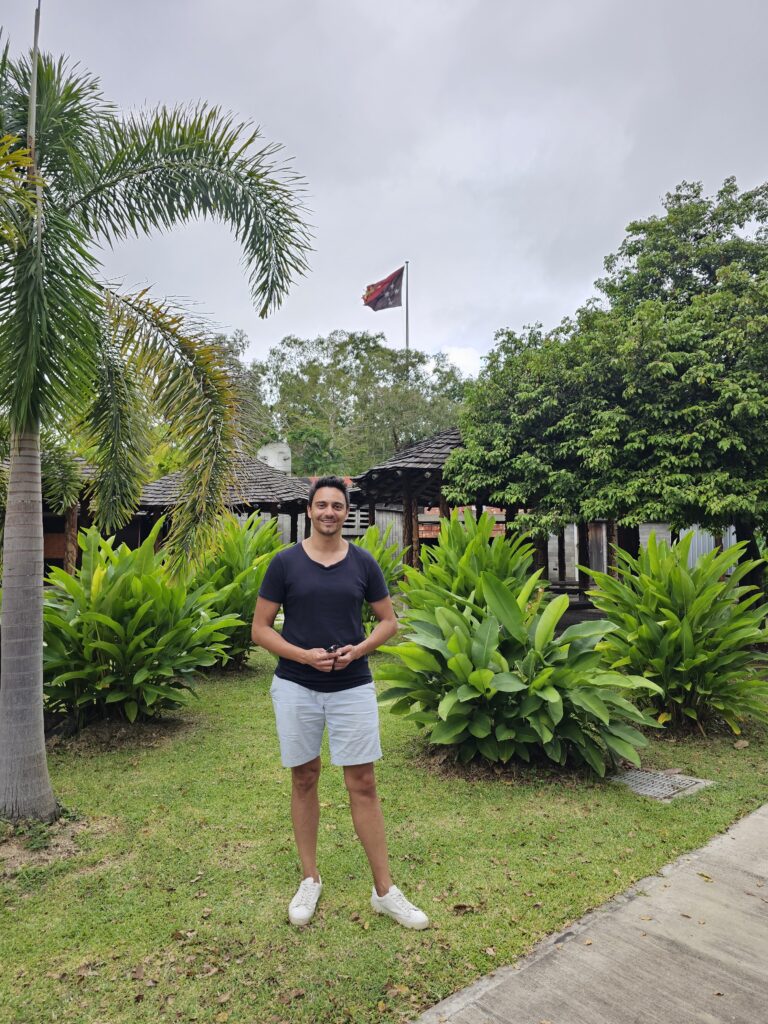
I must also say that although I was always told how dangerous Port Moresby would be, my experiences with the locals were nothing but good. Let’s hope that they will forgive me for not liking their capital that much. I will do my best to make it up to them one day by spending more time in the country. And since there could soon be a new country here, I might soon have a good reason to come back to PNG.
The fact that this maybe new country called Bougainville is to be created within PNG was one reason why I actually wanted to visit PNG as late as possible on my journey to every country in the world. It is said that Bougainville will become an independent country in 2025 at the earliest and 2027 at the latest. Therefore, I thought it would be worthwhile to wait a little longer with PNG so that I can visit this new country at the same time.
Meanwhile, a lot has happened, so that I am no longer sure whether Bougainville will become independent at all. First reason is the national politics of Papua New Guinea. Although the PNG government promised before the 2019 Bougainville referendum that they would respect the result of it, the leading politicians don’t seem to be completely convinced of this idea today. The president of PNG is considered an opponent of Bougainville independence.
Furthermore, the government now wants the independence issue to be decided by the people of PNG through an own referendum. That does no longer sound like they will unconditionally accept the outcome of the Bougainville referendum. So there are several obstacles that the PNG government has put up in the meantime that they didn’t say anything about in 2019.
The second point, and the more important one, is geopolitics. In 2022, China and the Solomon Islands, a neighboring country of PNG, signed a security agreement, which caused a shock in the Western world. The fear is that China wants to establish military bases in the Solomon Islands. Until now, the South Pacific was considered the backyard of Australia (and thus indirectly also of the USA). The fact that China is suddenly expanding there is seen as a threat in the USA and Australia.
Only shortly after my visit to Papua New Guinea, U.S. Secretary of State Anthony Blinken was in the country and signed a “defense pact” with PNG. This means nothing other than that the U.S. has unimpeded access to all of PNG’s military bases. The U.S. seems to have recognized the risk of no longer having unrestricted power in the Pacific. Under this “defense pact” with PNG, will they be in favor of that country giving up some of its land? Mind you, a region that has already been courted by China for some time? Or will the USA do everything in its power to prevent this?
We will probably find out the answer in the next 2-3 years. Personally, I think it is unlikely that Bougainville will become country number 198. Does this mean that I will never return to PNG? No, it does not. I could imagine traveling through Papua New Guinea for a longer period of time and seeing more of the country. However, this will only be an issue when I have reached country number 197.
First of all we went on to Papua with country number 153, the Solomon Islands. Trip report will follow soon.
Click here to find the trip reports of the 180+ other countries I have visited so far!
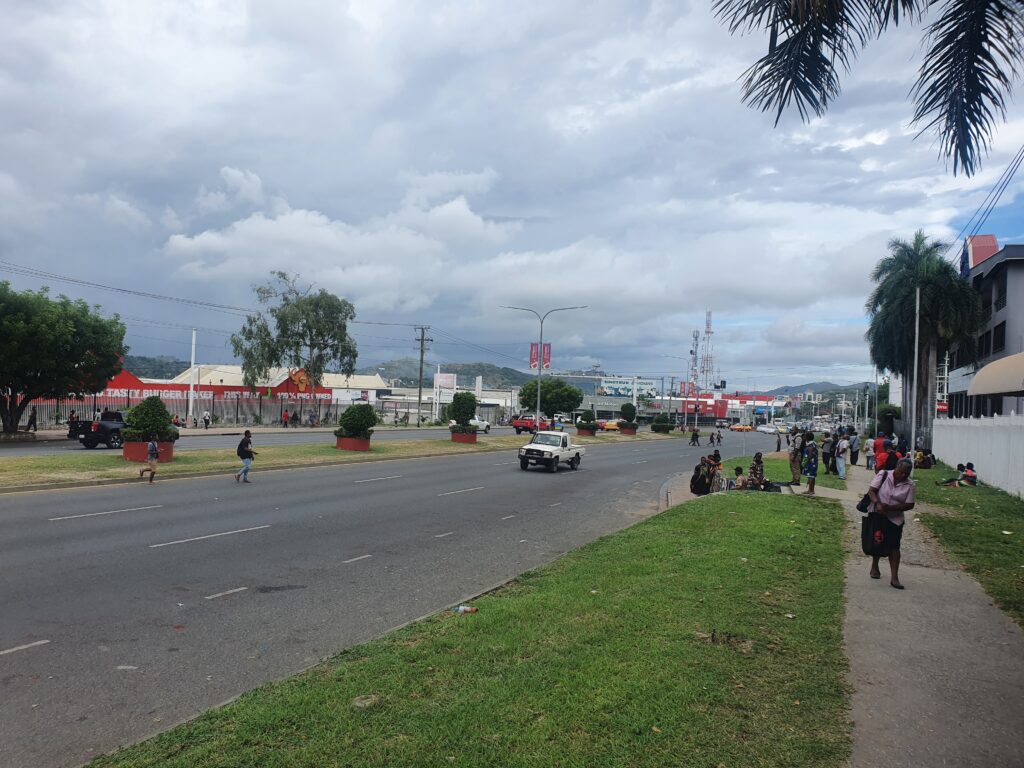
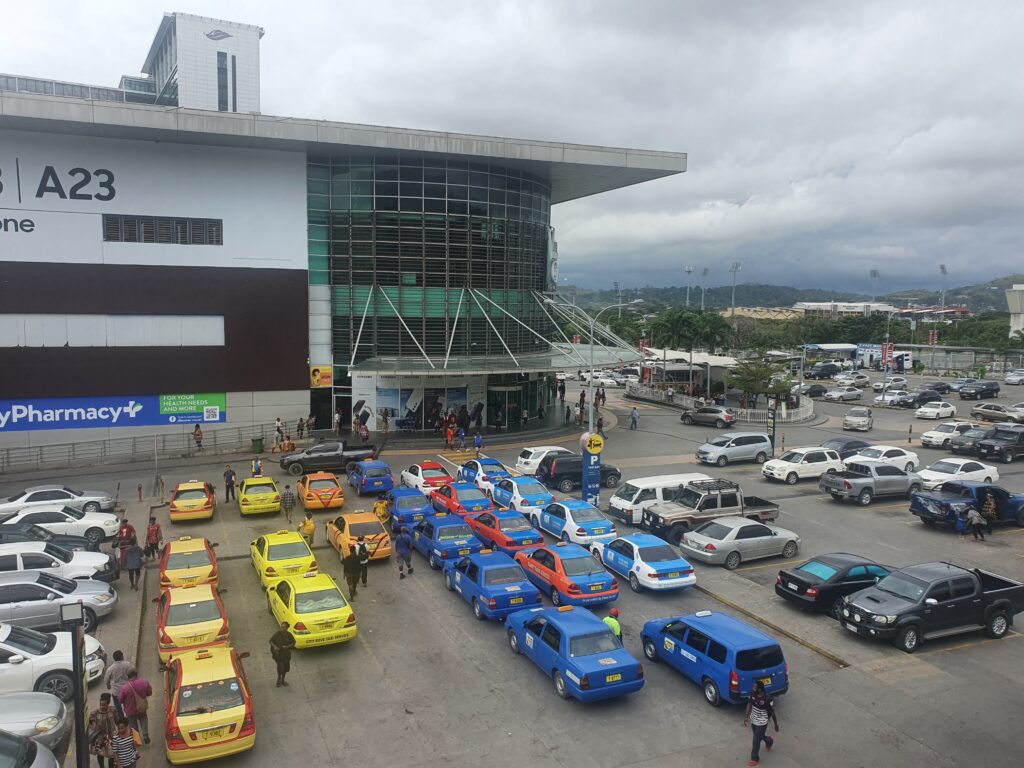
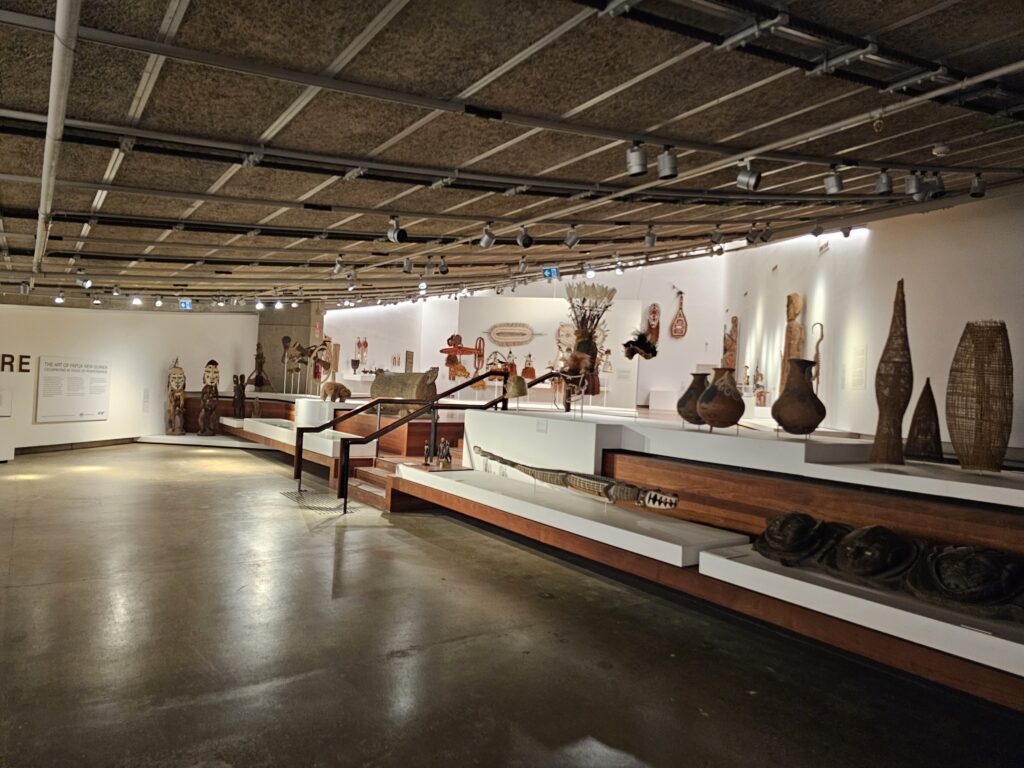
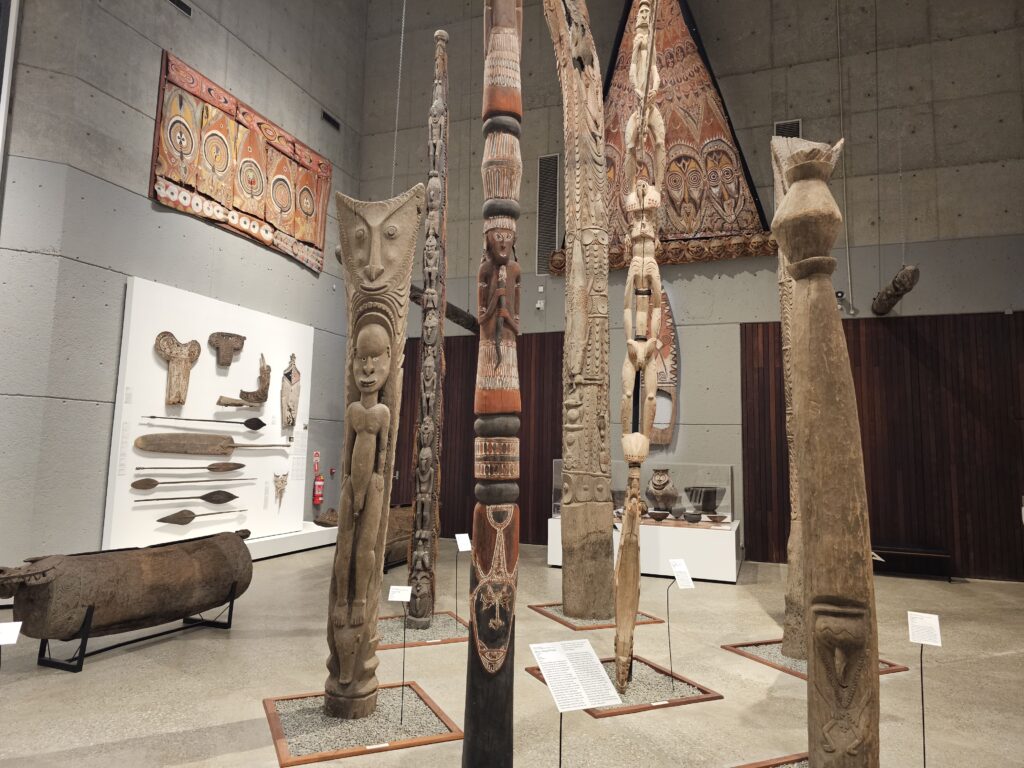
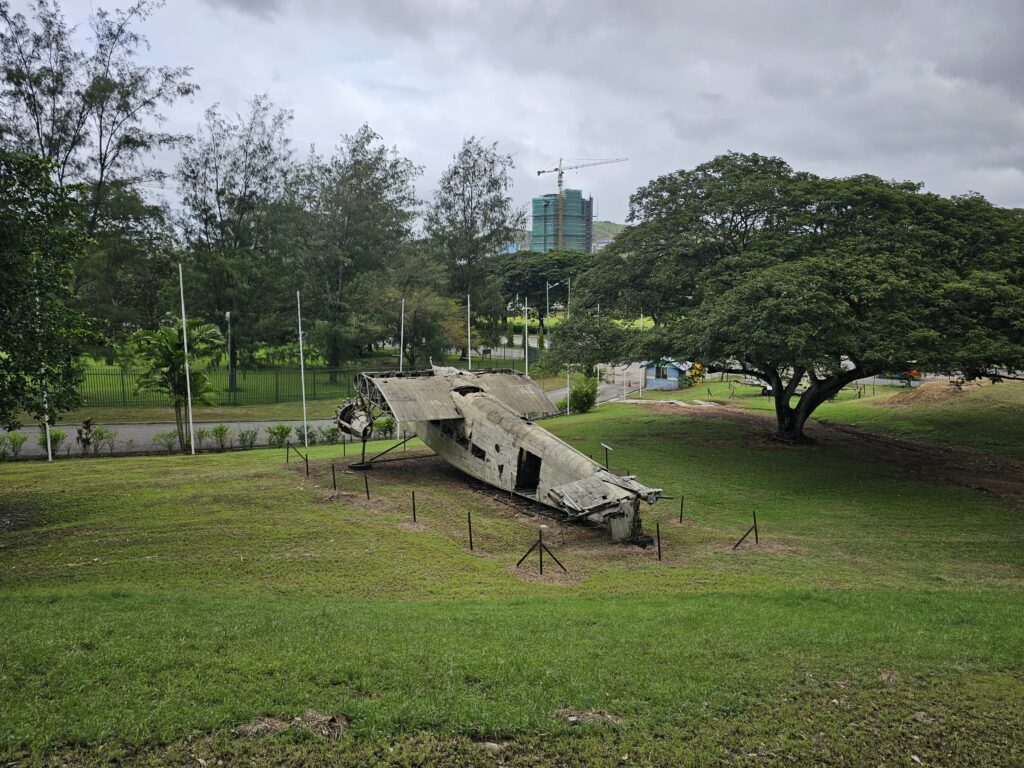
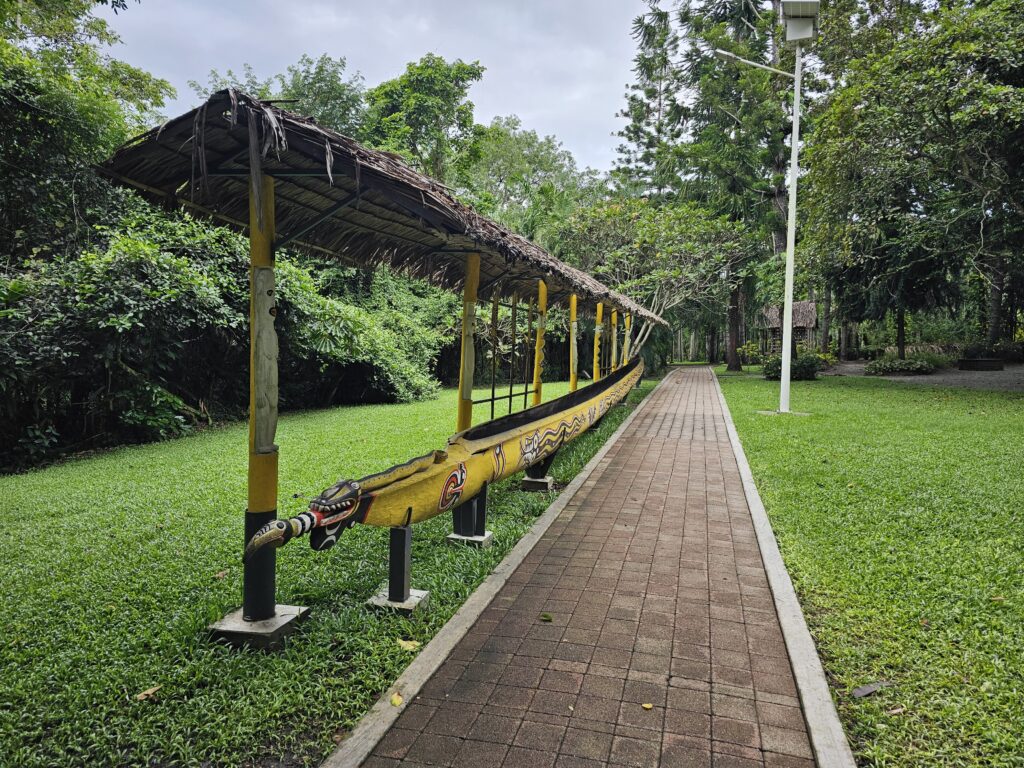
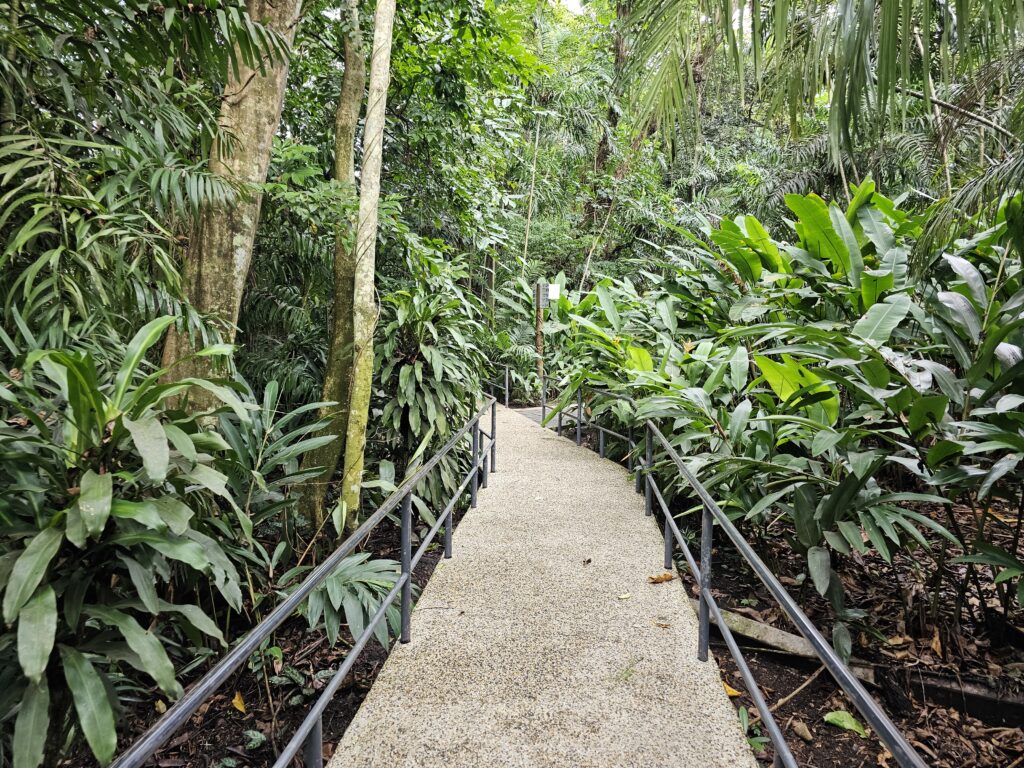
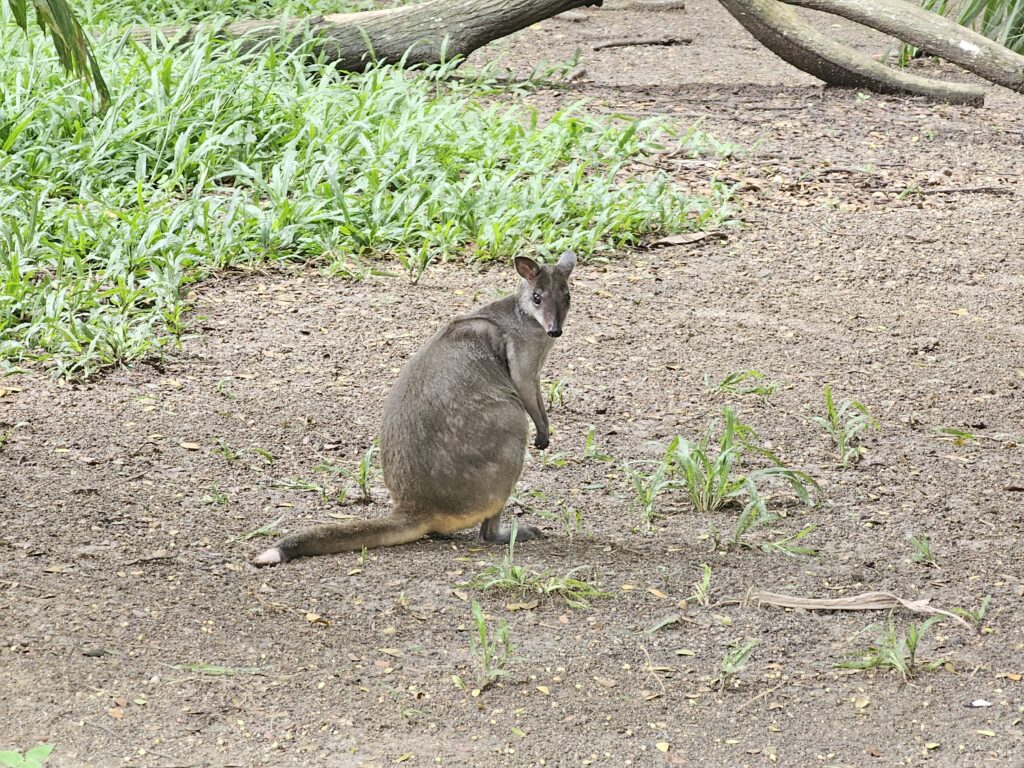
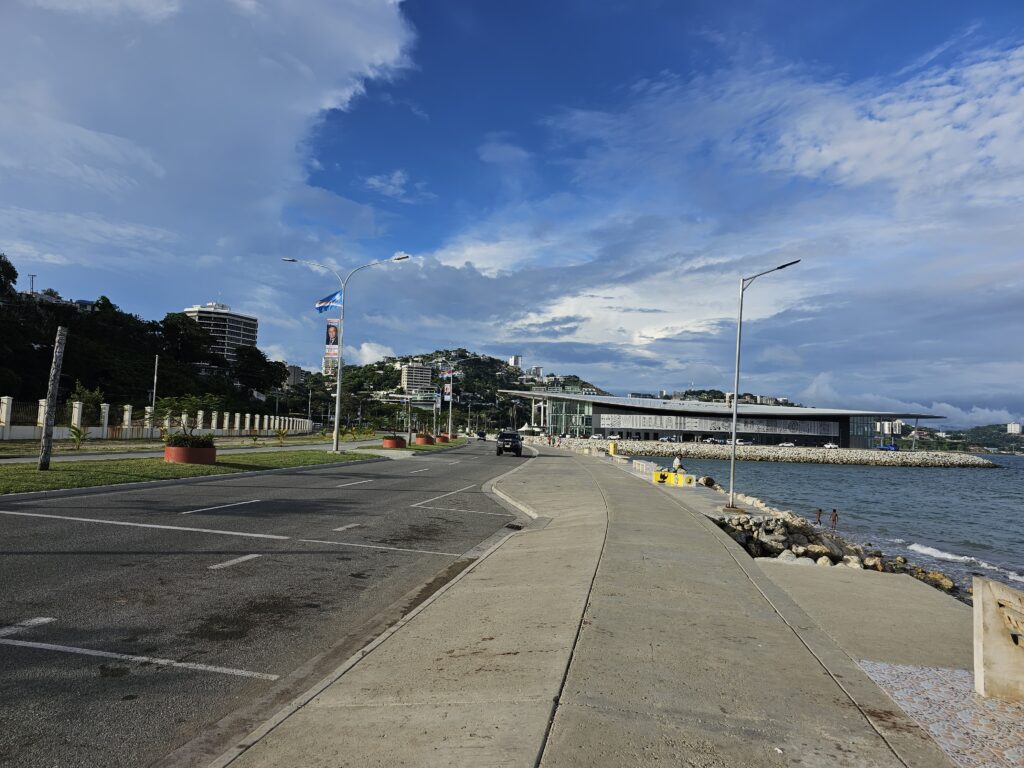
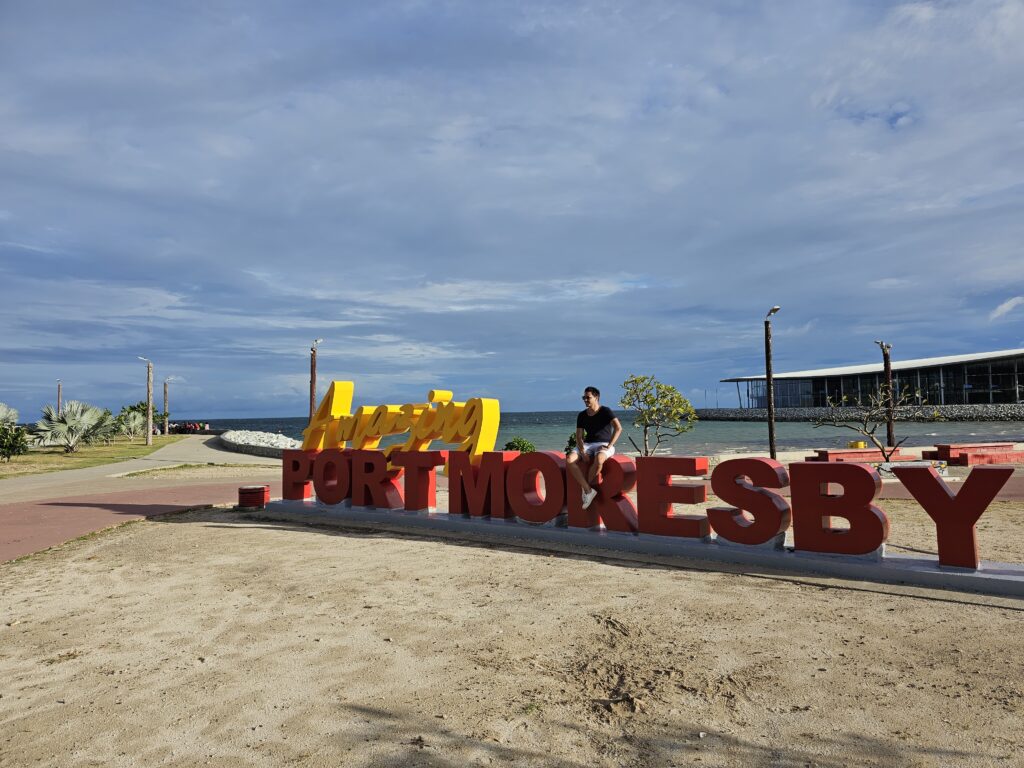
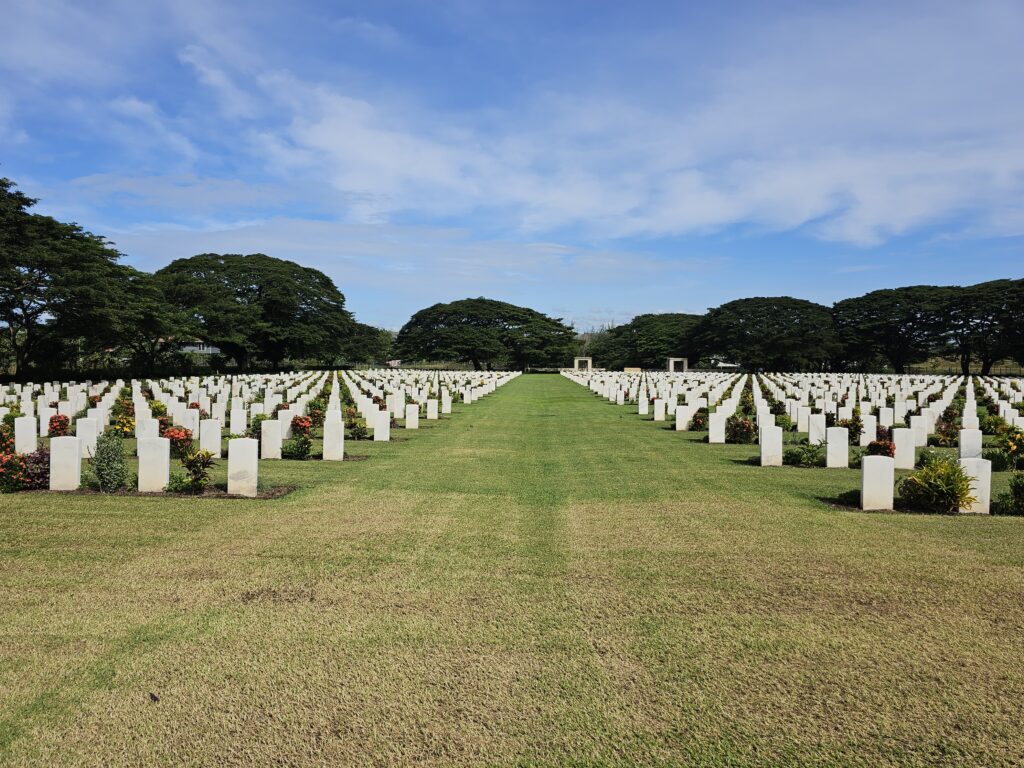
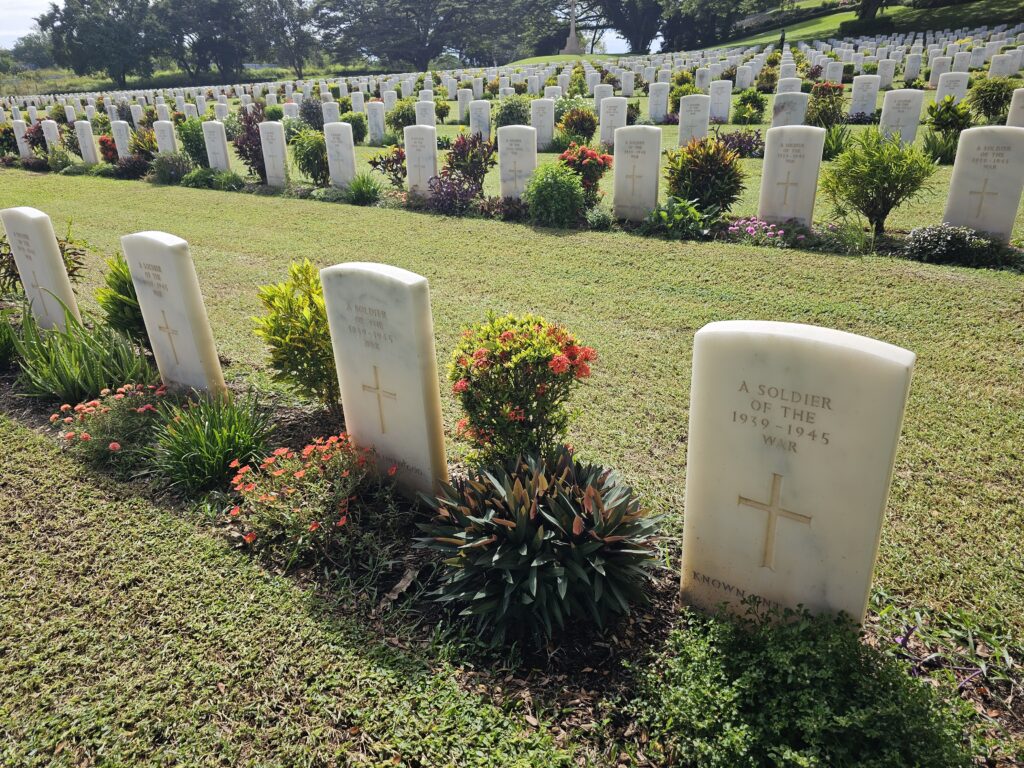
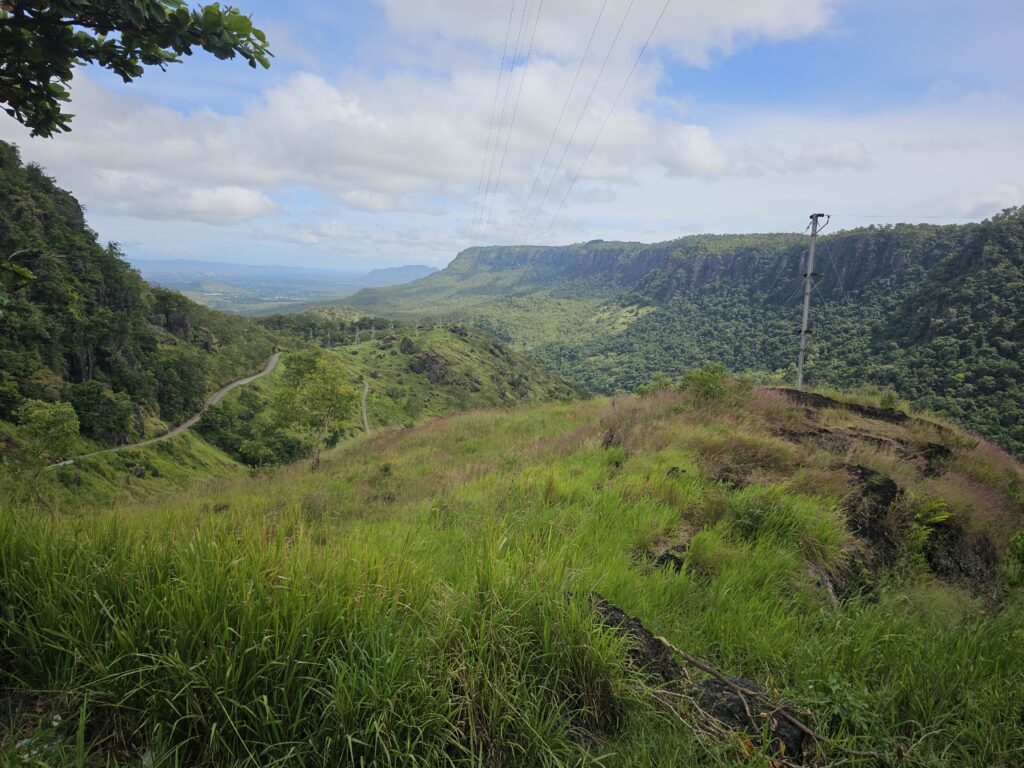
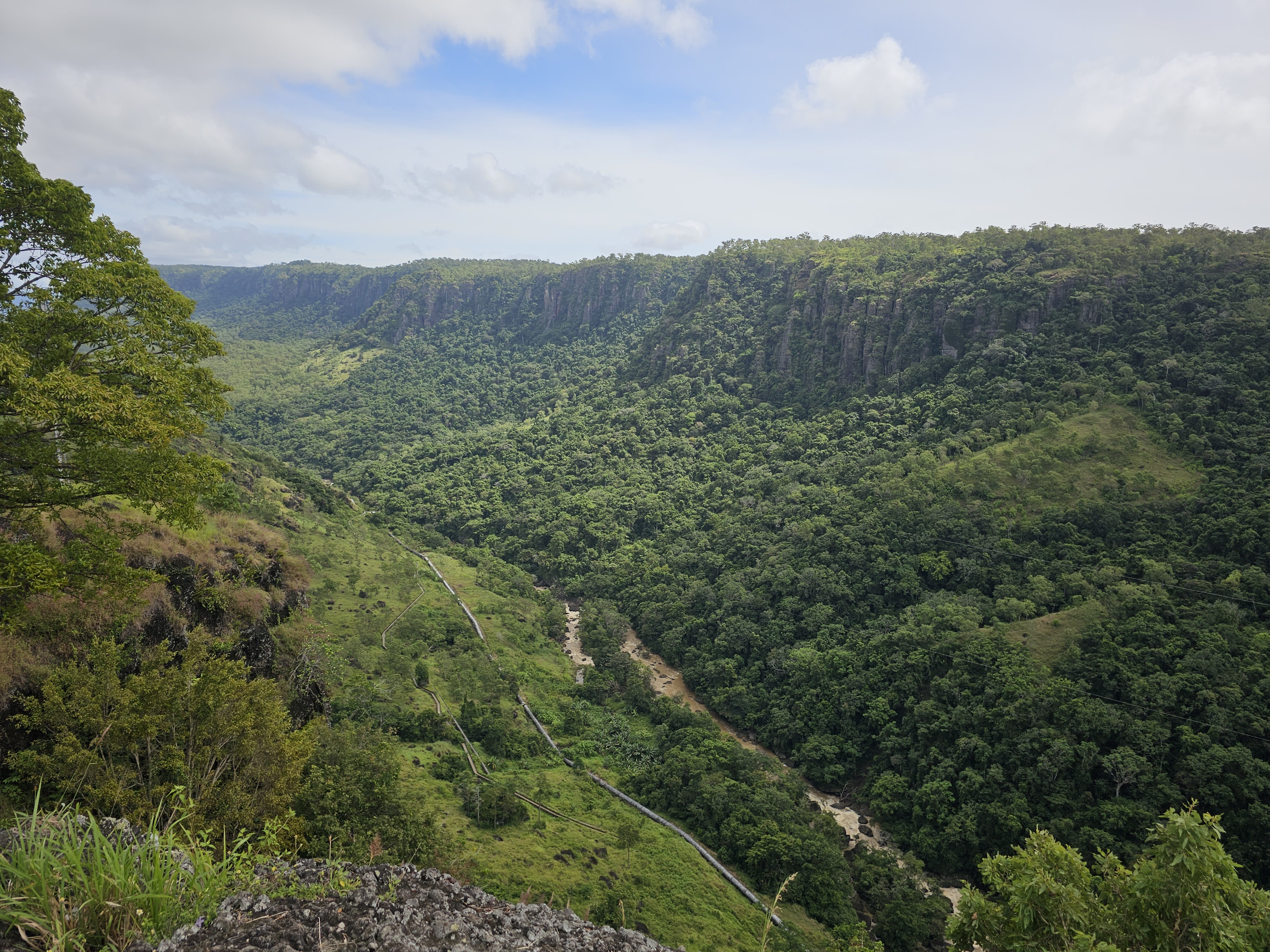
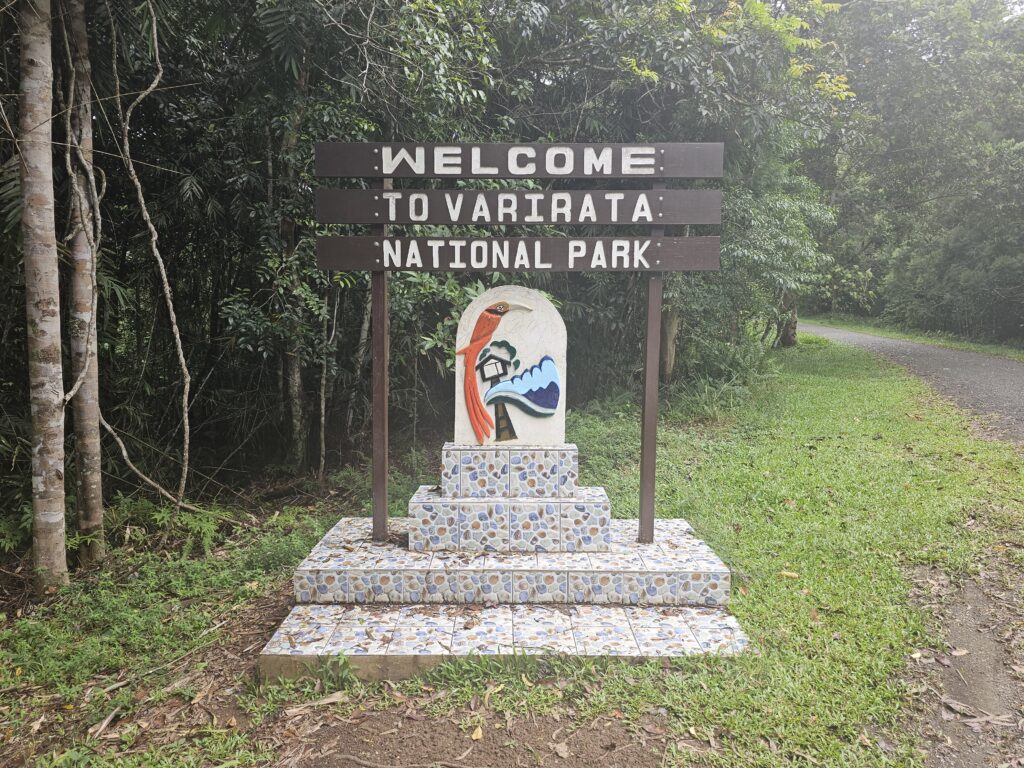
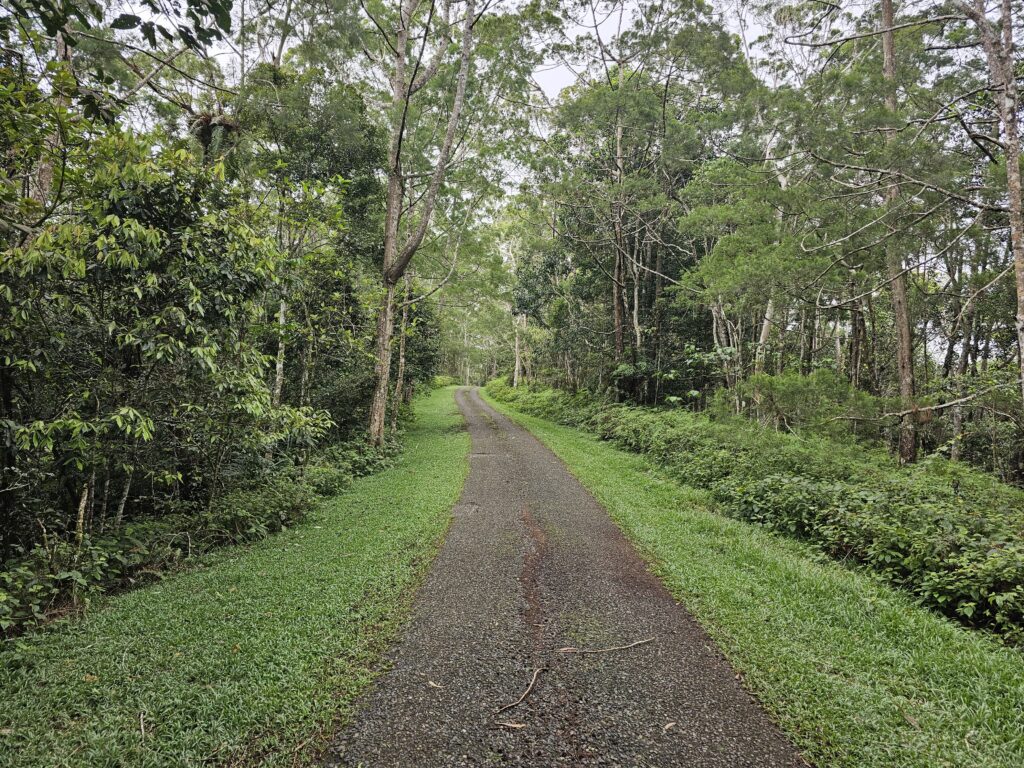
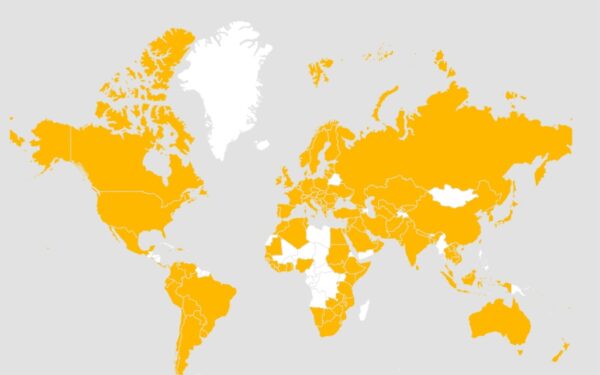
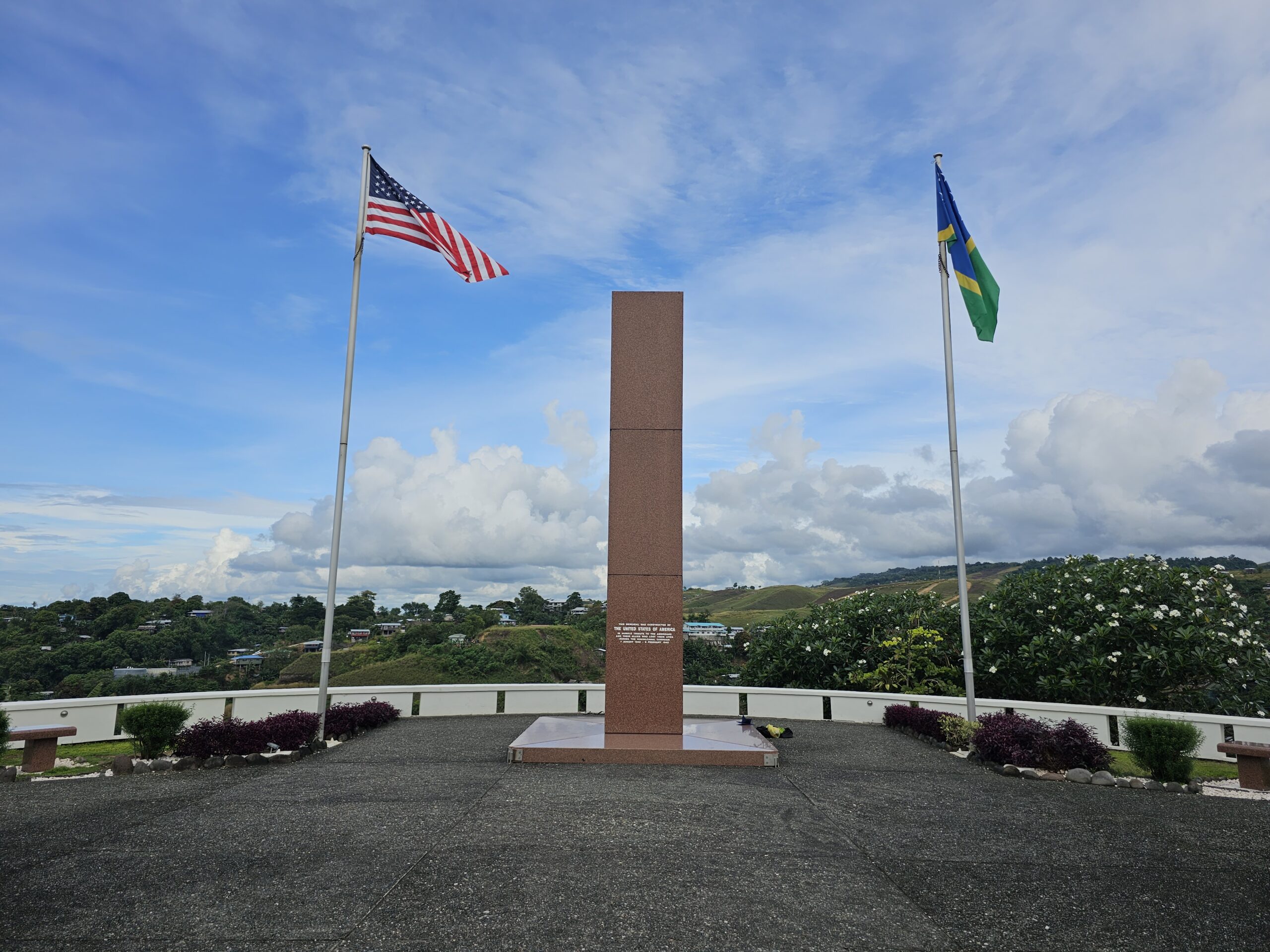
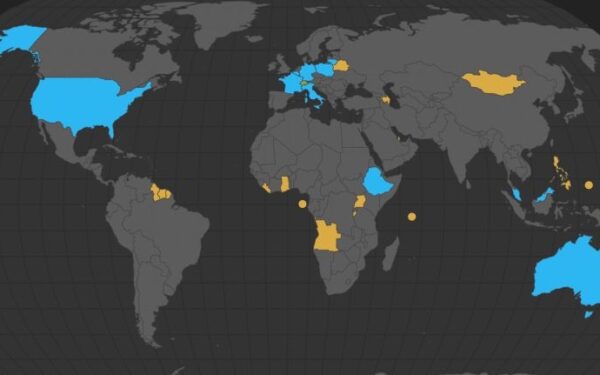
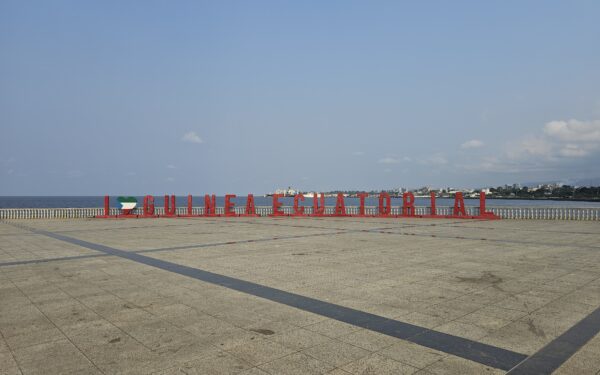
We 2 travelers from Switzerlamd spent 3 weeks in png individually and visited sepik river, goroka show. new britain and new irland. Exept of sepik river we didnt have a lokal guide, we did all by ourselves. Epic trip, but quite dangerous- we strandet in highlands middle in civil unrests like a civil war. Flights was canceled and we had to wait until end of the war. Epic memories.